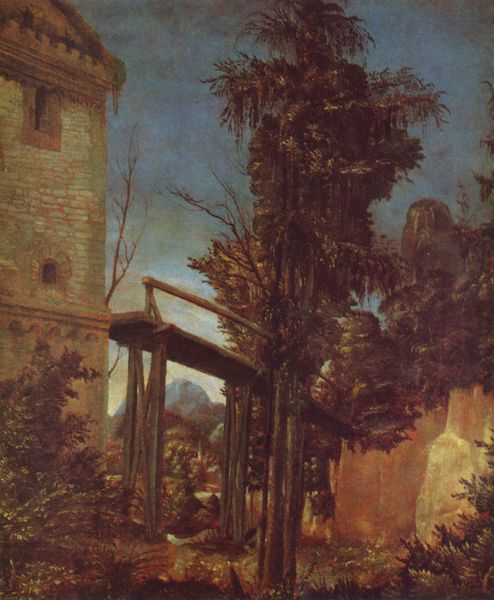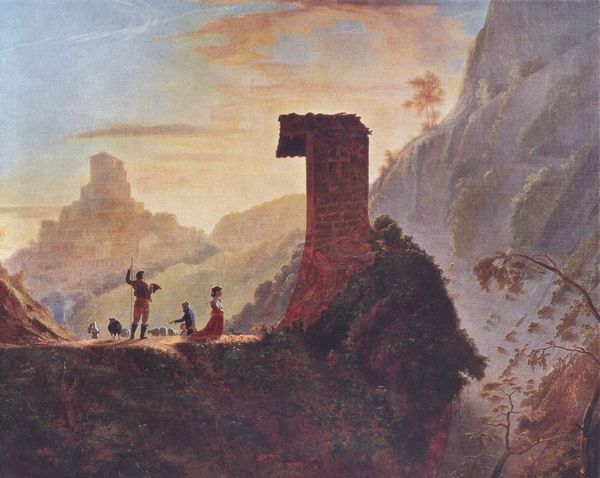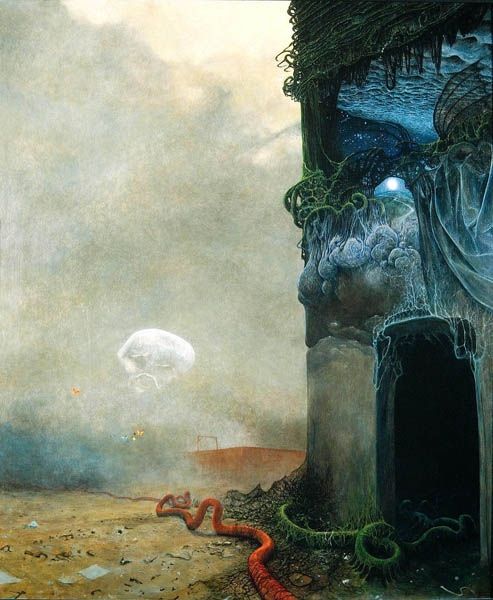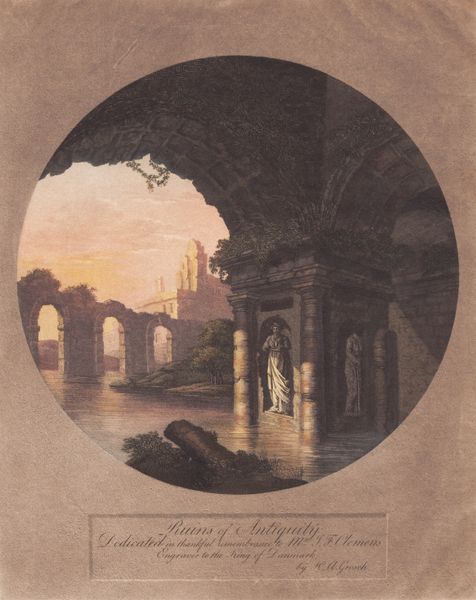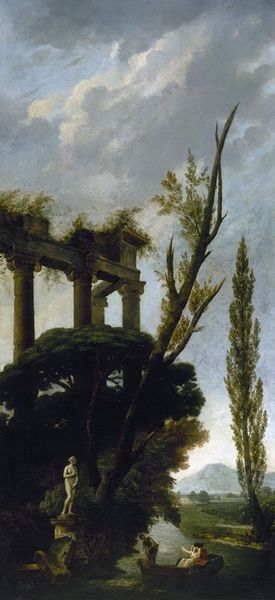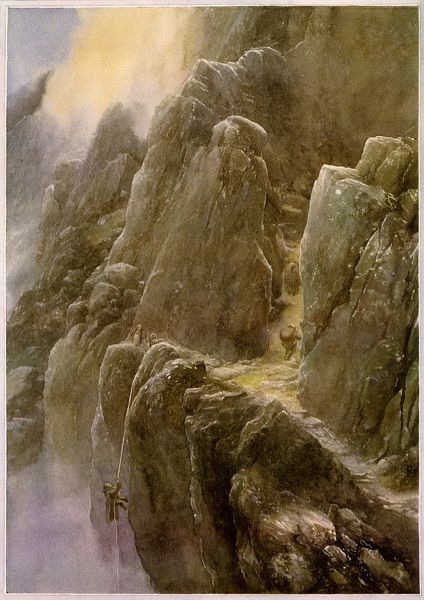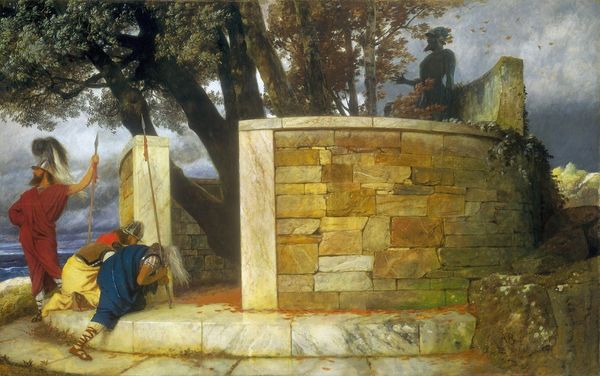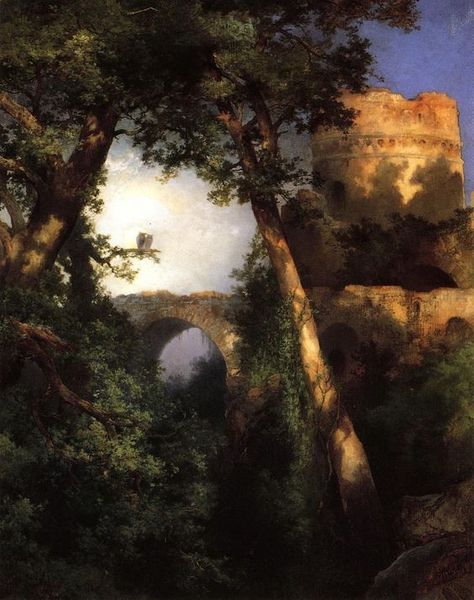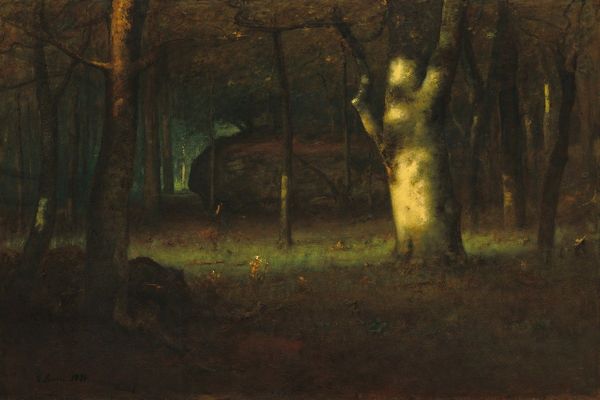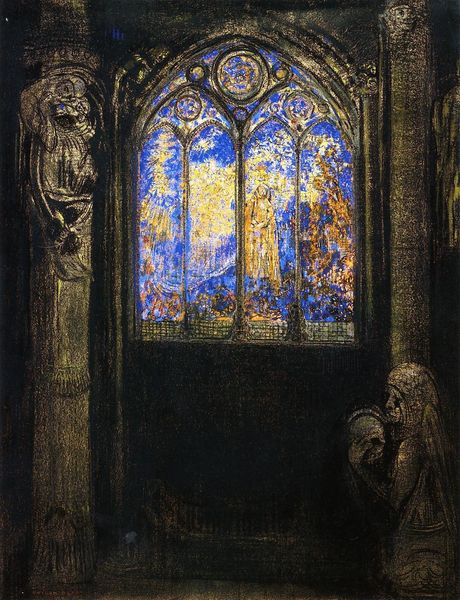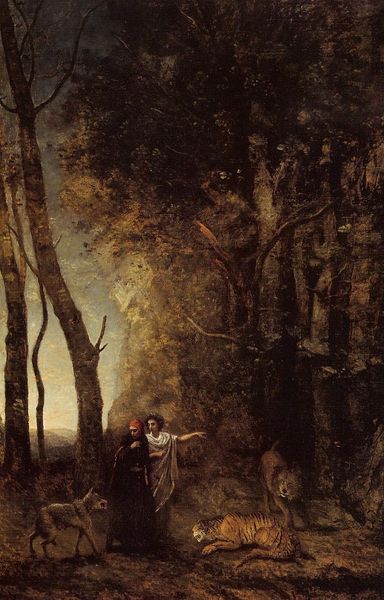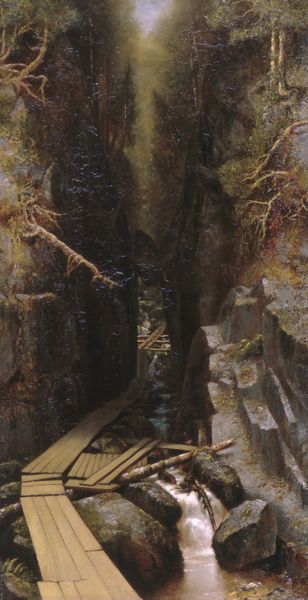
oil-paint, mural
#
oil-paint
#
landscape
#
figuration
#
oil painting
#
vanitas
#
romanticism
#
genre-painting
#
history-painting
#
mural
Copyright: Public domain
Editor: Here we have Caspar David Friedrich’s "The Cemetery Entrance," painted in 1825 using oil paint. The somber palette really sets the scene. What strikes me is the gate; it's open, but it feels imposing rather than welcoming. What do you see in this piece? Curator: The gate *is* imposing, isn’t it? The wreath above is an ancient symbol – eternal life, victory over death. It’s a visual representation of hope within a landscape heavy with symbols of mortality. The very forest, with its deep and perhaps endless trees, represents mystery but also the path to spiritual awakening and, ultimately, judgment. Editor: Judgment? I was thinking more along the lines of... acceptance? There's a figure by the gate that suggests maybe quiet contemplation. Curator: Contemplation, yes, absolutely. But don't you find the crumbling stones of the gatepost itself symbolic? Romanticism often used ruins as symbols, reminders of past glories, yes, but also inevitable decay and human transience, even failure. Friedrich is telling a complex story. Can we separate the symbol of the eternal, with its evergreen connotations, from the shadows of worldly loss? Editor: I see your point about the decay. I was so focused on the forest that I didn't consider how the earthly structures contribute. The painting becomes about reconciling earthly decay with a sense of eternity. Curator: Precisely. It’s not just a landscape; it’s a symbolic map of the human condition – caught between earthly demise and hope for eternal life. Editor: Wow, I'll definitely be thinking about symbols differently from now on. Curator: Symbols allow us to tap into layers of meaning in even the simplest composition; they build emotional resonance over generations, Editor, always remember to ask "Why *this* image?".
Comments
No comments
Be the first to comment and join the conversation on the ultimate creative platform.
